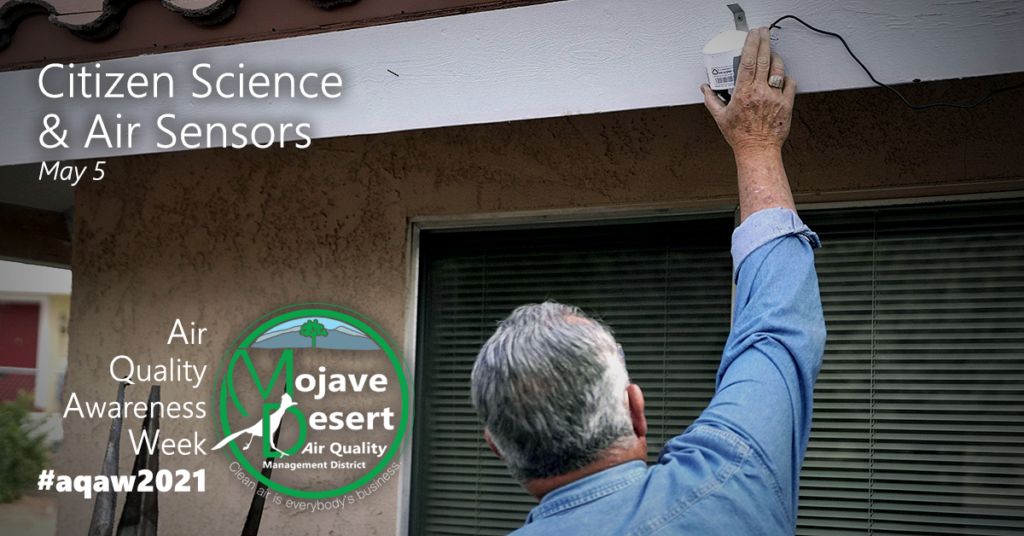AQAW2021 Day 3 features a not-quite-new phenomenon that’s helped enhance the conversation on air quality at home.
We mean that: Outdoor ambient air quality at the residential level.

Citizen science is the practice of public participation in scientific research and data collection, according to the U.S. Environmental Protection Agency. Further, citizens’ interest and engagement in studying the effects different sources of air pollution have on our breathable air continues to grow year after year.
Naturally, the emergence of low-cost sensors has fueled that interest.
PurpleAir
California lawmakers in 2017 passed Assembly Bill 617, creating the Community Air Protection Program. Its goal is to better understand air quality and how to reduce air pollution in highly impacted communities. For instance, MDAQMD utilized grant funding the program provides to purchase dozens of PurpleAir sensors.
PurpleAir is a community air monitoring system of PM (10, 2.5, 1.0) sensors.
The PurpleAir system comprises many sensors which community members install, control and maintain.
PurpleAir sensors use a fan to draw air past a laser. This creates reflections from particles in the air. Then, the system uses these reflections to count particles in six sizes between 0.3 and 10 microns in diameter.
The cloud receives data uploads every 80 seconds (or so) where PurpleAir stores it for download and display on the PurpleAir map.
Readings from these sensors are ineligible for official pollution data. However, they provide a general idea of the PM readings in the area near the community sensor.
These sensors have been installed and placed in many locations throughout the MDAQMD jurisdiction. Additionally, some residents in our communities have purchased their own to learn what’s happening in the air we breathe.
Head to the May 5: Citizen Science & Sensors AirNow page to learn more about the citizen science movement and how these low-cost sensors play a big role.
